Time: 10:30AM – 12:30PM
Location: Between The Numbers and Buena Vista
Arkansas River 07/19/2023 Photo Album
After a couple hours of success on the Arkansas River on Tuesday, I decided to give the river another trial on Wednesday morning. Wednesday was get away day from our cabin, so we were required to pack up and clean dishes and do laundry prior to departure. My wife, Jane, and our friend, Amy, made plans to bike from The Numbers river access area to Buena Vista, and then play pickleball, while I fished, so I settled on fishing a section in between those two end points.
I dropped them off with their bicycles at 9:15, and I then drove to a parking lot at my chosen fishing destination. I quickly pulled on my waders and assembled my Sage R8 four weight, and I was ready to hike along the river path by 10AM. The air temperature was already around 75 degrees, and the sun was quite bright. As I was about to leave the parking lot, Jane and Amy arrived, and we said our final goodbyes, as we went our separate ways.
I ambled along the dirt path for .4 miles, before I decided to cut down a steep bank to the river’s edge, but when I peered down, I spotted the hat of another angler. There was one other fisherman in the stretch that I selected, and he happened to occupy my chosen starting point. What luck!. I reversed direction and hiked back toward the parking lot for .1 mile, and then I carefully stepped down a steep bank. I began my day with the size 8 yellow fat Albert, a prince nymph and a salvation nymph, since the aforementioned combination was effective on Tuesday in the late afternoon. On my second backhand cast I created a woeful tangle, and after some nasty words I spent eight minutes cutting off my flies and redoing the entire configuration. I was about to finally make another cast, when the downstream angler arrived. He asked if I was just starting, and I replied yes. He then asked, if I would mind, if he went around me and dropped in upstream. I told him to go ahead but asked for a forty yard buffer. He continued past me and much to my surprise, he resumed fishing no more than twenty yards upstream.
I once again uttered some unkind words to myself, and I hooked my flies to the rod guide and scaled the steep bank and continued back along the path, until I was .15 mile from the parking area. I was fuming the entire time. I finally engaged in some serious fishing, but the trout did not cooperate. I prospected with the dry/dropper for the next hour, until I approached the parking lot, and all I had to show for my efforts were a few splashy refusals to the fat Albert. The nymphs were totally ignored, so I concluded that the fish were looking toward the surface for their meals, and I decided to shift to a double dry approach. I removed the nymphs and the fat Albert and tied on a peacock hippie stomper and a size 14 light gray caddis. The hippie stomper attracted some attention with a refusal and a very brief temporary hook up, so I made a slight bit of progress in my quest for trout number one.
Promising but Disappointing
I arrived at the path to my car, so I decided to explore the western bank of the Arkansas River. I crossed at a bridge and carefully negotiated my way along the bank in a down river direction for .2 mile. The western side of the river featured some very nice long and wide runs and riffles over moderate depth, and I was guardedly optimistic that I could finally add a landed trout to my scorecard. The first ten minutes resembled the previous hour of fishing, and I spotted a yellow sally or two, so I replaced the hippie stomper with a yellow stimulator. The stimulator failed to attract attention, so I once again modified my offerings, and in this instance I replaced the stimulator with a size 10 Chernobyl ant and trailed a lime green trude. The fat Albert at least attracted looks, so I reasoned that perhaps the larger foam ant might draw interest. Tilt. Another change followed, and I replaced the lime green trude with a size 14 gray deer hair caddis. This finally did the trick, and I hooked and landed an eleven inch brown trout that consumed the caddis. A few more temporary connections with the Chernobyl and caddis combination elevated my confidence.
Best Fish Near Closing Time
I was now approaching the departure time required in order to meet up with Amy and Jane in Buena Vista by 1PM. I continued to work my way upstream along the left bank, and I allocated the most casts to the most promising sections, where the river flowed at a modest speed over moderate depth. During the last twenty minutes, I hooked and landed two additional brown trout, and both snatched the gray caddis. One of the brown trout measured to twelve inches, and that was my best of the day. Did I leave just as the resident trout began their daily feeding binge? 12:30PM is typically within the time frame of increased feeding activity, although I was uncertain whether that was the case on a hot summer day. I will never know the answer to that question, as I hurried up the bank and returned to the car in order to meet my commitment.
Wednesday was a tough late morning of fly fishing. I began with limited allotted time, and the encounter with the other angler diminished the fishing window even further. I know it sounds ridiculous, but I felt rushed and constrained by the shortened time frame. My next adventure is a scheduled guided float trip on Friday, July 21. Stay tuned.
Fish Landed: 3

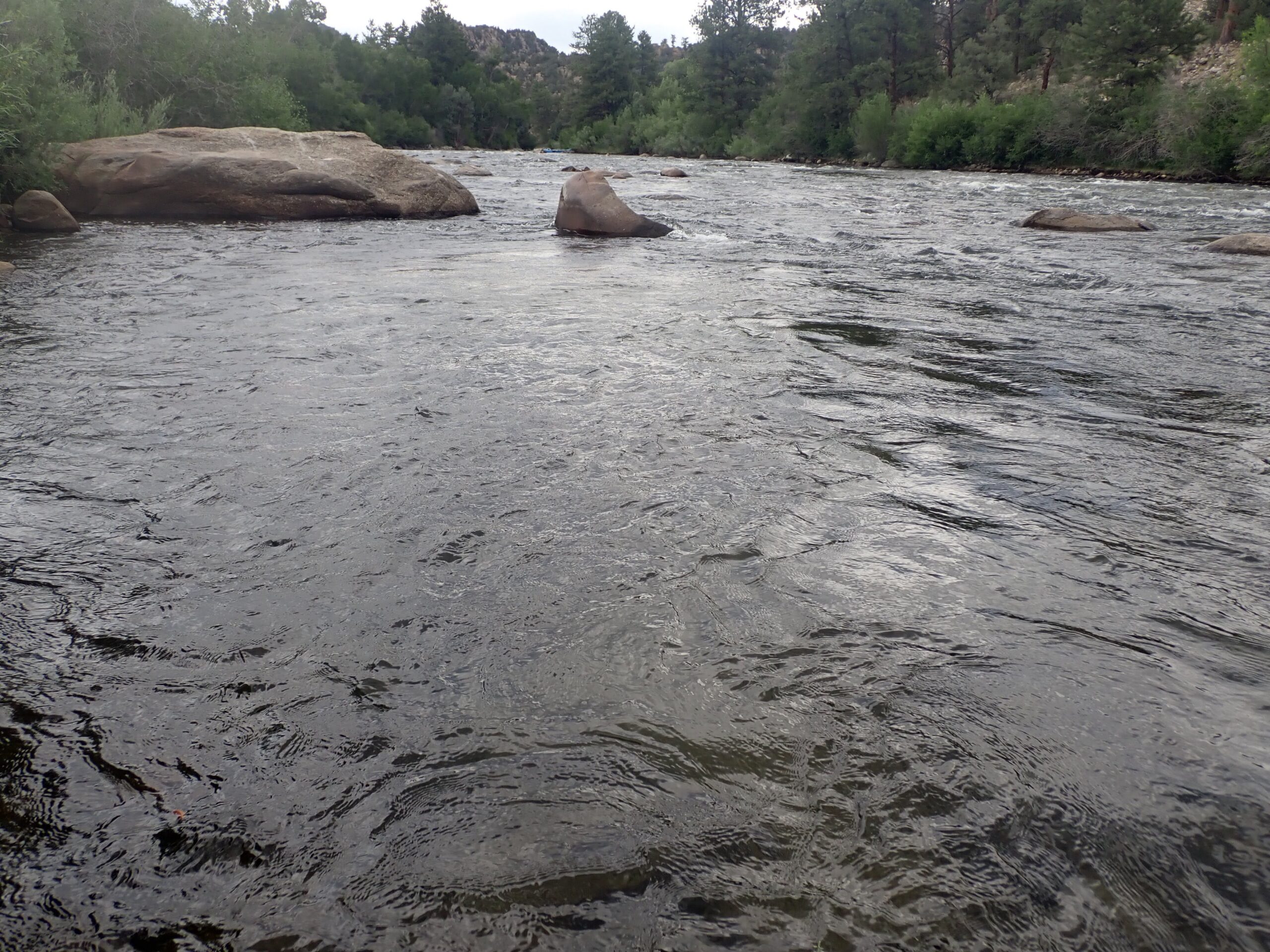 Perfect Trout Refuge During High Flows on the Arkansas River
Perfect Trout Refuge During High Flows on the Arkansas River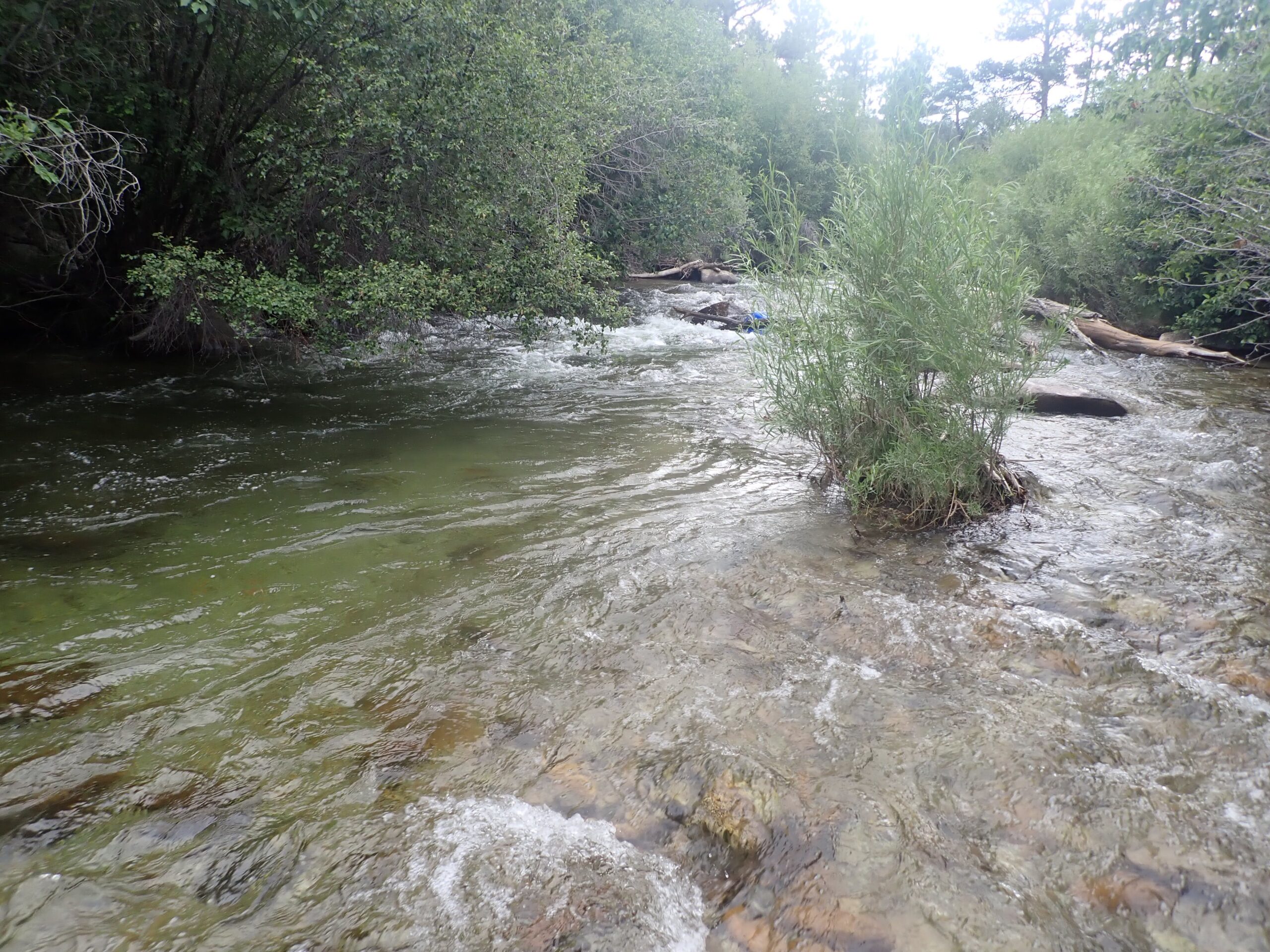 A Promising Deep Pool
A Promising Deep Pool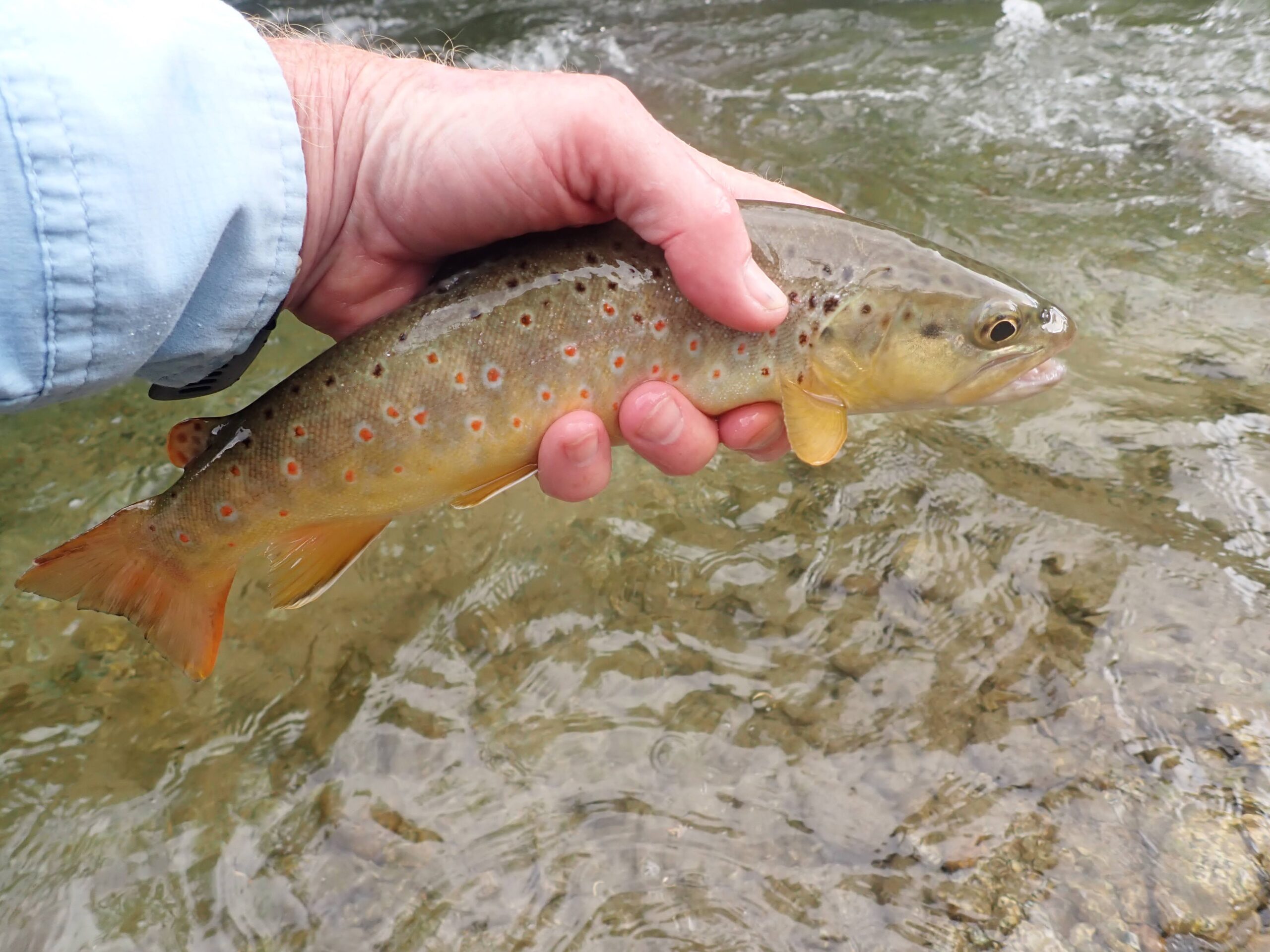 Butter Colored Brown
Butter Colored Brown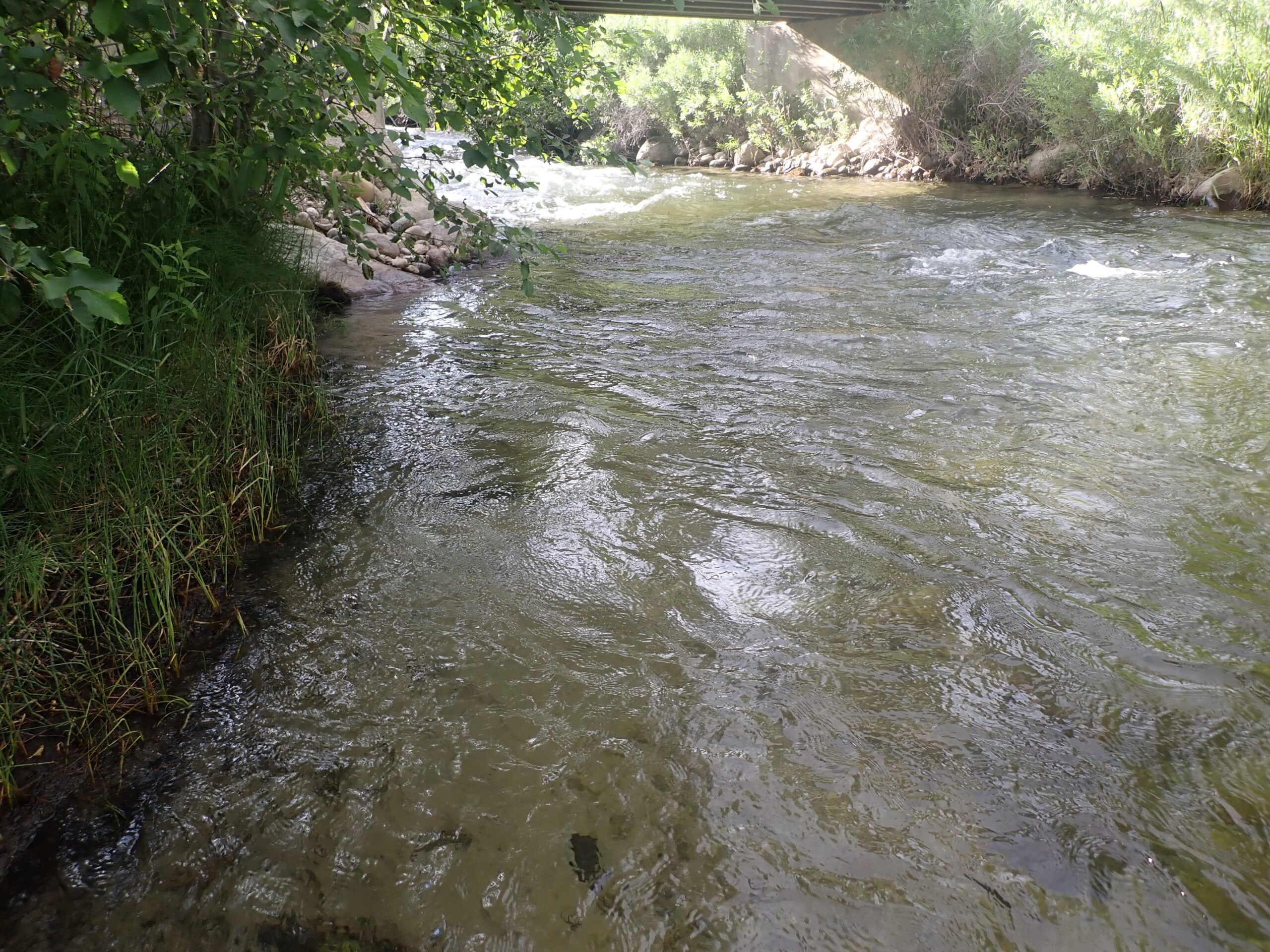 Very Productive Spot
Very Productive Spot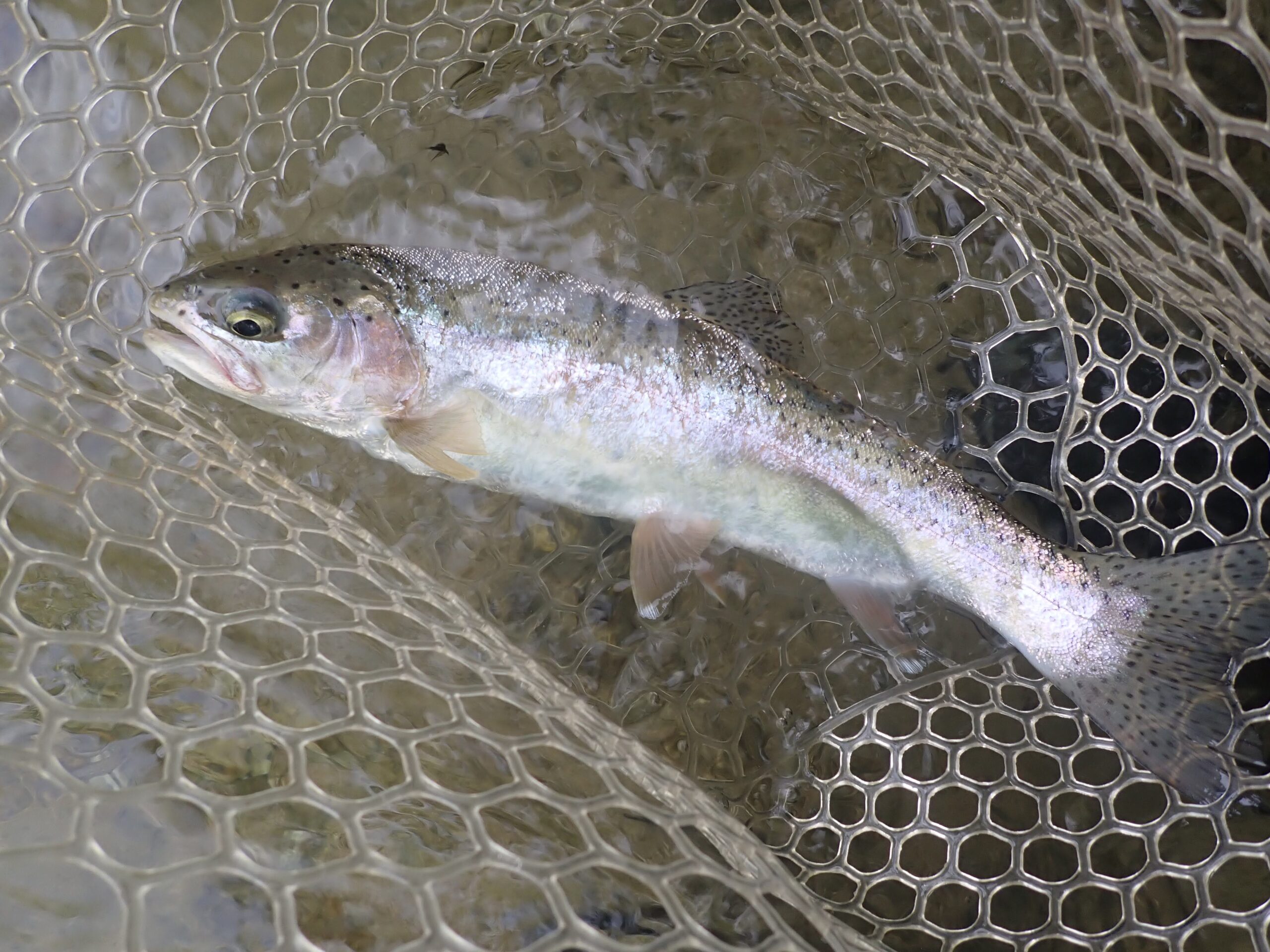 Surprise Rainbow
Surprise Rainbow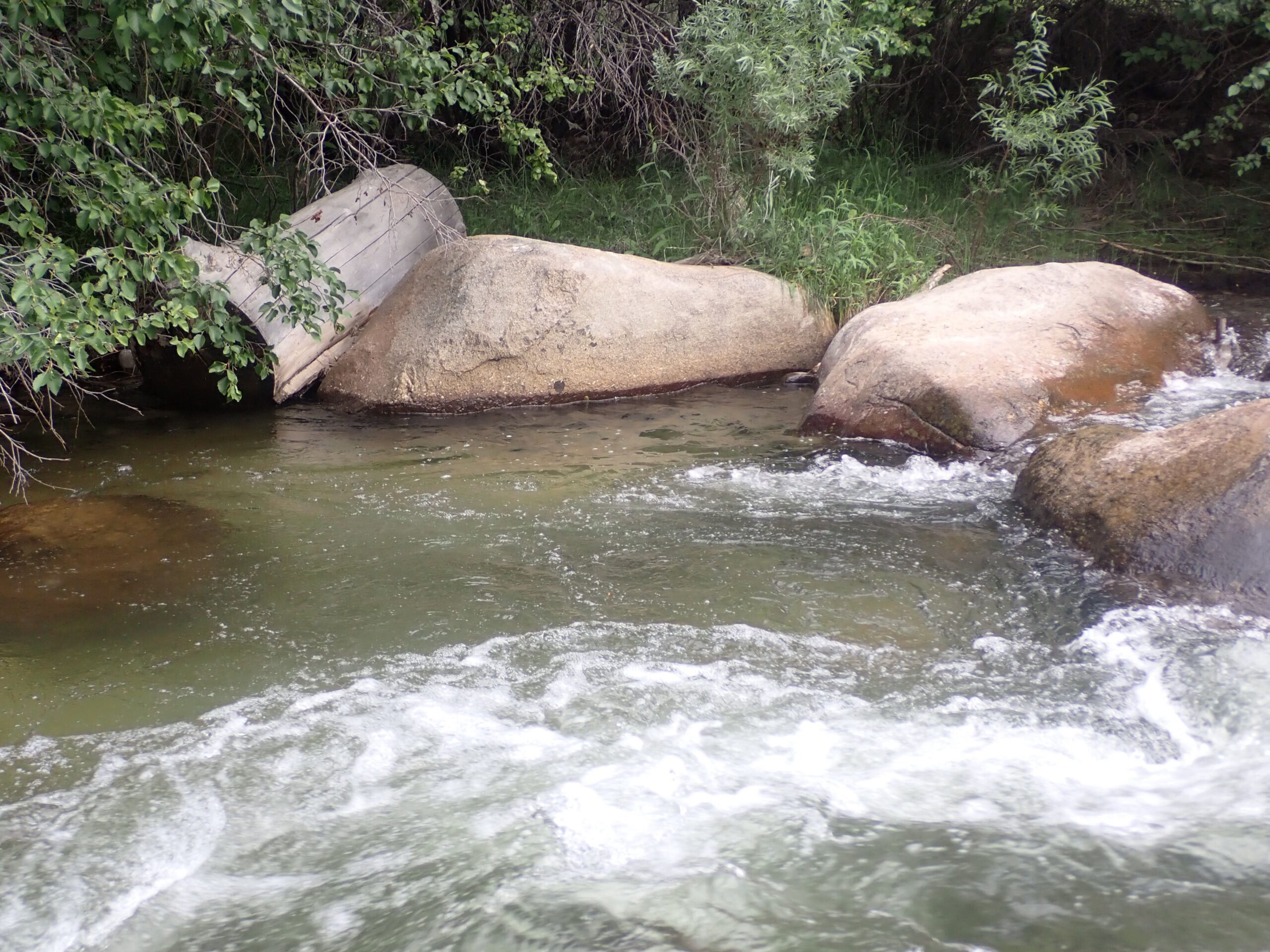 Zoomed in on Site of the Big Guy
Zoomed in on Site of the Big Guy